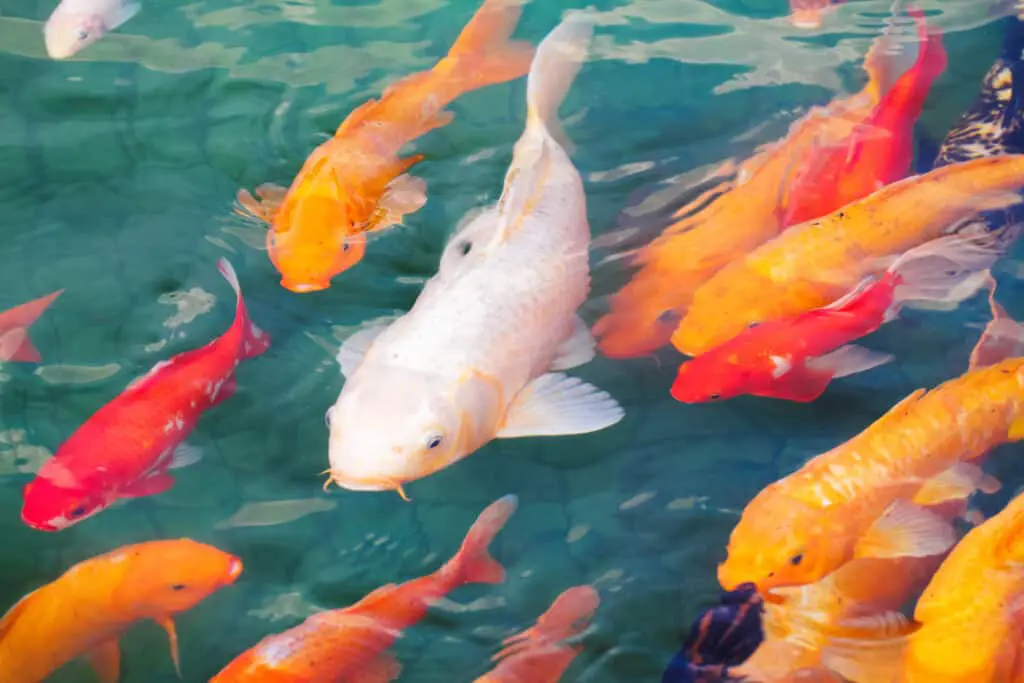
Koi fish are spectacular additions to any outdoor pond area. Even though they are relatively easy to look after, there is still some essential knowledge that you will need to ensure that you care for them correctly. One important aspect would be winter care, especially information on when you can expect your koi fish to start hibernating. Knowing how to care for them in all seasons is very important if you are lucky enough to own koi.
Koi fish will start becoming more lethargic when temperatures drop to around 50°F, and when temperatures consistently dip below 48°F, they will enter a state of torpor. Torpor includes decreased bodily functions, reduced heart rates, reduced oxygen consumption, and reduced brain activity.
Knowing the climatic conditions that promote hibernation is only the beginning of what you will need to know about your koi fish and when they hibernate. When to start preparing for your kois’ hibernation is also essential if you want to care for them properly during this time. What kind of behavior you might expect from them is also beneficial knowledge.
Pro Tip: If you’re tired of wasting money and making costly mistakes on the koi-keeping hobby or are thinking about buying koi fish but don’t know where to start, I strongly suggest you check out this ebook. I recently read this ebook, and it contains SO much useful information, such as:
- 3 proven steps to identify koi fish diseases
- WARNING: 3 things you should NEVER do when it comes to caring for koi
- When to seek professional help when it comes to looking after your koi
When Will Your Koi Start To Hibernate?
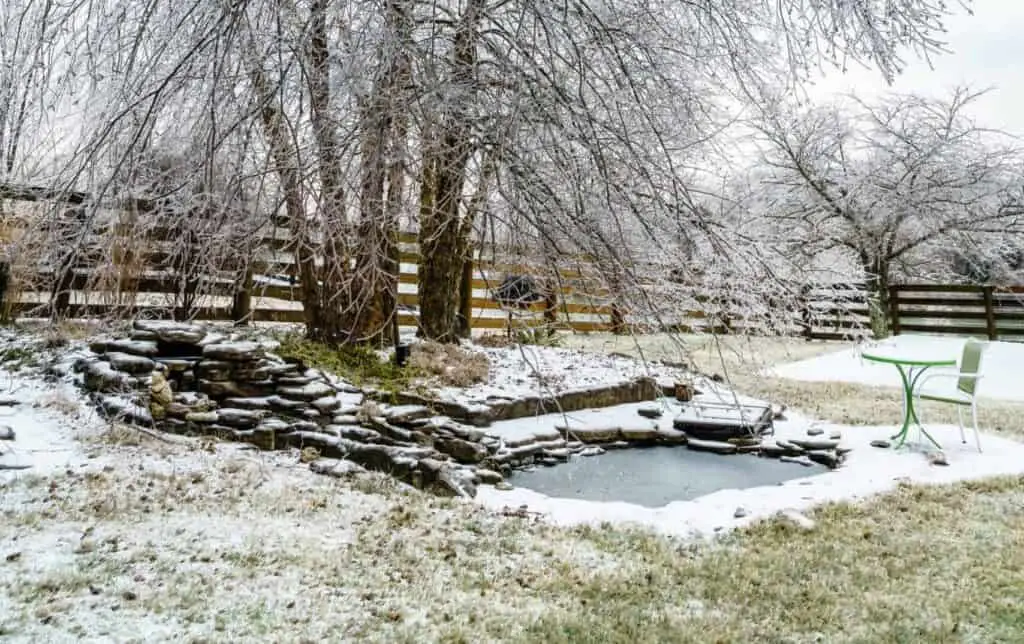
Koi fish are poikilothermic animals. A straightforward translation of this is that your koi fish are cold-blooded. Cold-blooded animals regulate their temperatures through the temperatures that surround them.
Your koi fish will pick up on any temperature changes in their water, and their bodies will start to react accordingly. As summer comes to a close, temperatures drop, and winter preparation begins.
If you are lucky enough to live in a region where you do not experience extreme cold or where the temperatures remain somewhat the same year-round, your koi may not ever start to hibernate.
In these conditions, even if it is wintertime, your kois’ body temperatures will not drop enough to necessitate entering semi-hibernation. Therefore, you can see that koi fish do not hibernate unless the temperature drops enough to be necessary.
At What Temperature Will Koi Fish Go Into Hibernation?
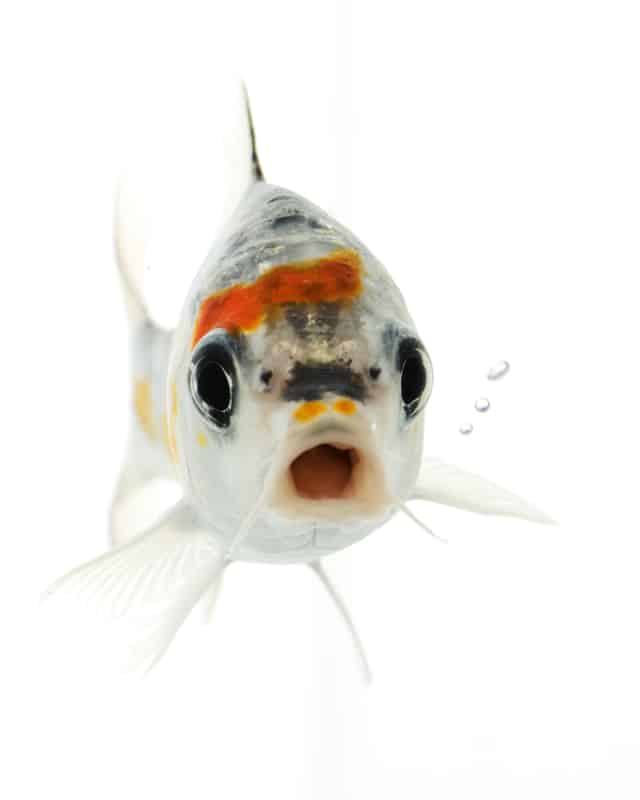
Like most cold-blooded animals, Koi fish deal with temperature changes by becoming active in the warmth and slowing their bodily functions down in the cold.
Once temperatures drop into the range of 48°F – 64°F (9°C – 18°C), you should only be feeding your koi fish once or twice a day as their systems are already beginning to slow down.
You will notice that your koi are not as active anymore, preferring to remain in warmer waters or sunning themselves in sun patches.
Once they drop below 48°F (9°C), your koi fish’s bodily functions slow down to an almost standstill, and this is when they enter their semi-hibernating state.
Koi fish’s bodies release hormones that suppress their appetite, decrease tissue growth and protein synthesis, slow down heart rates, decrease their oxygen consumption and reduce brain activity.
This type of semi-hibernation that koi fish go into is called torpor. Unlike hibernation, torpor is a temporary state of being. During torpor, your fish conserve their energy by lowering their body temperatures and decreasing their metabolisms, and they also reduce their immune systems, breathing rates, and primary body functions.
When your koi enter their semi-hibernation, it is only for short durations. They use these short spells to conserve their energy, and they will only move around enough to keep their joints from freezing up.
This semi-hibernating state also allows your koi fish to move around if they need to. Say, if the weather heats up for a day, your fish might head to a sunnier spot to catch some of the rays.
What Do Koi Fish Do When They Hibernate?
When koi start to go into their semi-hibernation state, they will head toward the bottom of the pond. It is here that the water is at its warmest during the winter months, and your fish will congregate in the warmest areas.
Often in smaller ponds, you might notice that your koi are huddled together at the bottom of their pond. This congregation is not for the body heat.
Koi are cold-blooded and cannot heat each other with their bodies. No, this is because that particular spot is where the water is the warmest, and your koi will all want a piece of that warmth.
Once your koi have found themselves in the warmest spot in the pond, they will float upright, tucking their fins in while they remain suspended in the water.
They do not remain completely still at all times while suspended. Now and then, your koi will move their fins and bodies. They do these movements to prevent their joints from becoming frozen.
Suppose you reside in an area where the temperature fluctuates, and you experience a few slightly warmish days. In that case, you might even spot your fish taking a slow swim around or moving into a sunny spot to sun themselves for a bit.
So if you notice your koi fish suspended in the water, barely moving, there is no reason for concern. They are only in a state of semi-hibernation.
There is only cause for concern if you notice your fish are belly up in the water with absolutely no movement. It would be best not to disturb or move your koi in this semi-dormant state, as you do not want to shock them unnecessarily.
Can Your Koi Freeze and Come Back To Life?
Unfortunately, if your koi fish happens to freeze solid, it will not come back to life once it thaws. Koi fish are unable to freeze and unfreeze and be okay.
Instead, if your koi pond freezes over completely, it will be the end of them. Luckily, it is not often that your koi pond will completely freeze.
Your koi are very sensitive to the change in their water temperature, and they will instinctively move to deeper waters to protect themselves from the freezing waters.
For this reason, koi ponds need to have sections at least 3 – 4 feet deep. If your pond has this depth, your fish can safely move to the deeper regions and remain there for the winter.
In most cases, only the top 5 – 6 inches of your pond’s water will freeze, and if you have a depth of 3 feet, this will ensure that your koi do not get frozen during the winter.
In extreme cases, your pond’s water surface can freeze up to 18 – 24 inches. In these cases, it would be best to ensure that there are places in your pond that reach a depth of 4 – 5 feet.
As long as you ensure that your koi have enough room underneath the frozen surface water to retreat to, then you shouldn’t have to worry about your fish freezing during the winter.
How To Create A Perfectly Safe Environment For Your Hibernating Koi Fish
The depth of your koi pond’s water is one of the primary aspects of ensuring that your koi fish remain healthy and safe during the winter.
Yet, there are several other aspects that you should consider and safety mechanisms that you should set in place to create a happy and secure environment for your koi while they are in their semi-hibernation state. Let’s peruse some of these aspects.
Adequate Pond Cleanliness For Your Hibernating Koi
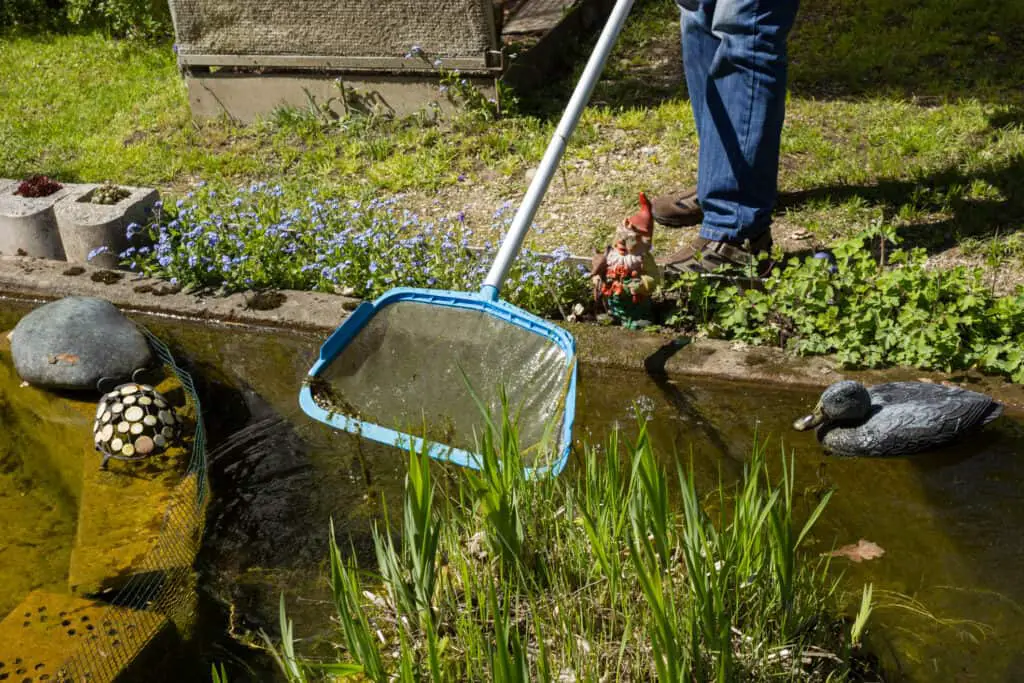
Before the severe coldness of winter sets in, you should give your pond a bit of a clean. During this clean, the central section you should focus on is removing as much surface debris as possible.
Surface debris will sink to the bottom of your pond, settling there and decaying. The last thing you want your fish to endure all through winter is a muddy and sludgy pond bottom.
You could also give your pond’s bottom a once over with a pond vacuum before the water gets too cold or freezes.
Proper Feeding Regime For Your Hibernating Koi
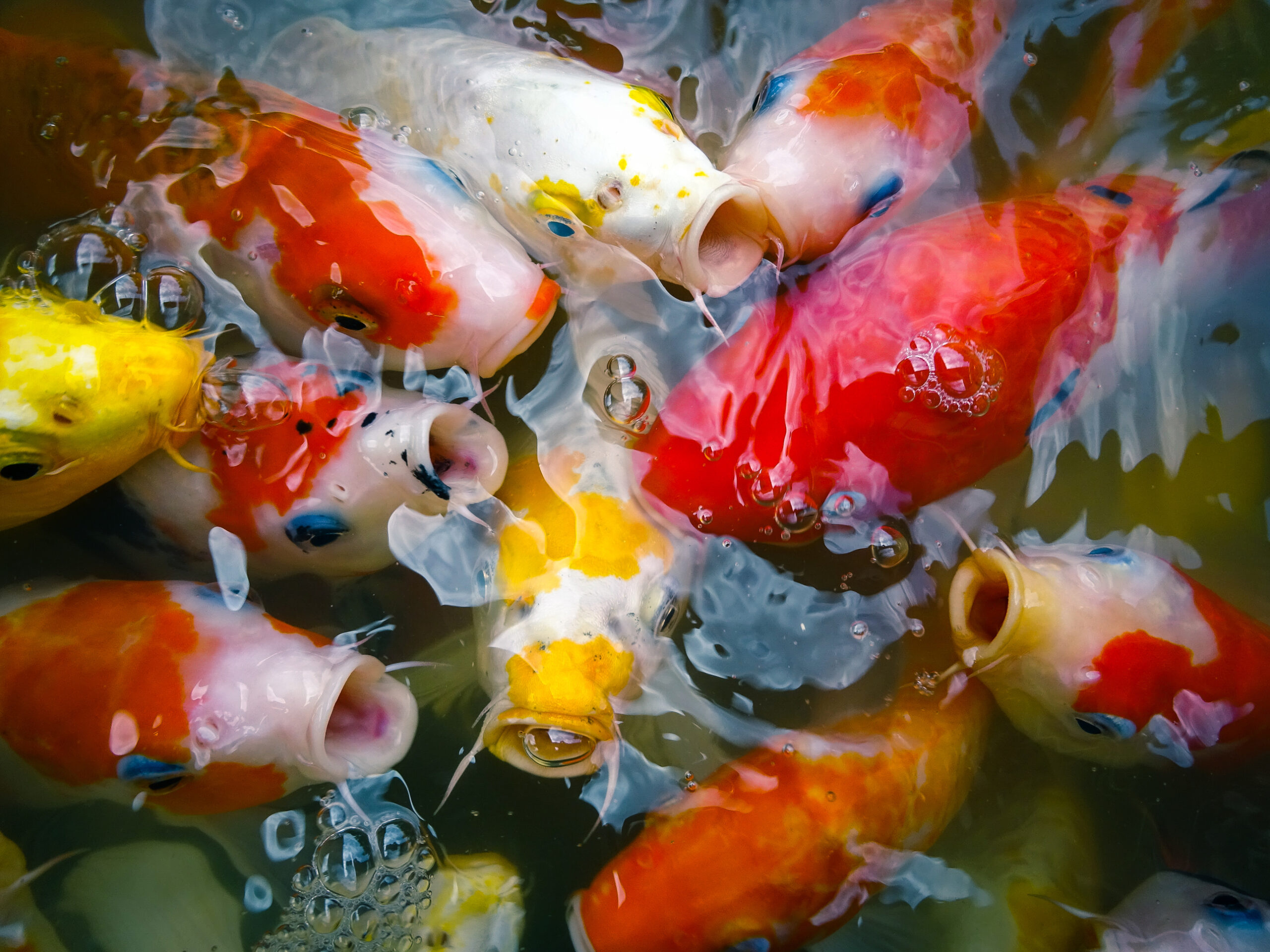
Once temperatures get to the range of about 48°F – 64°F (9°C – 18°C), you should only be feeding them once or twice a day instead of their usual 2- 4 times a day.
In this temperature range, your koi fish’s digestive tracts are already slowing down, and it would be preferable if you fed them a special diet of low protein feed as it is harder for them to digest proteins in these temperatures.
When your koi fish enter their semi-hibernation state, their bodies no longer digest food. If you had to feed them during this time, the food would sit in their digestive tract and rot there, leading to adverse side effects and even the death of your koi.
Therefore, it would be best to stop feeding them when the temperatures drop below 48°F (9°C).
Proper Pond Water Aeration For Your Hibernating Koi
If you notice that your koi are swimming toward the water’s surface, this can indicate a lack of sufficient oxygen in the water.
Even though your koi fish have slowed down their oxygen intake, they will still need to get some oxygen from the water. Therefore, you will need to ensure that some oxygenation is still occurring in your pond.
Many people will remove their aquatic plants during this time, and even if you don’t, often, your plants are not providing adequate amounts of oxygen for your koi.
So you will need to ensure that your pond is getting oxygenated somehow. A waterfall pond feature is a great way to aerate your pond, guaranteeing permanent movement of the water.
Another way to ensure that your pond is being aerated and oxygenated appropriately is to place an aeration machine in the water.
If you decide on this route, you should set your aeration machine closer to the surface than you might have it during the summer. If the device is making bubbles near the bottom of the pond, these bubbles could disturb your fish, and it would be preferable if this did not happen.
You will also want to ensure that your aerator is only gently stirring the water and not creating turbulence, ultimately disturbing your semi-dormant koi.
Proper Ventilation For Your Hibernating Koi
You will need to ensure that your pond does not completely freeze over during the winter. If the pond freezes over, it prevents unwanted gases from being able to escape out of the water and prevents oxygen from entering the water. The hole in the surface ice will need to be large enough for gas exchanges.
If you have an aerator, a hole in the surface water is essential to allow the bubbles to escape and not build up under the surface. A hole also enables your koi to reach the surface to access oxygen if the oxygen levels in their water get depleted.
There are several ways to ensure that your pond does not completely freeze over. One of the easiest methods would be to build a waterfall feature into your pond. The waterfall provides an area in your pond that always has movement preventing your pond from freezing completely.
If you don’t have a waterfall, you can choose a particular spot in your pond and keep it free of ice. The optimal way to do this would be to keep your eye on it. As soon as your hole begins to freeze over, you remove the thin ice before it becomes too thick or hard to remove.
If the spot you have chosen becomes frozen and the ice is too thick to remove by hand, refrain from removing the ice with a hammer or saw or hitting the ice with any force.
The force from hitting the ice can send shock waves through the water, which can be detrimental to your semi-hibernating fish. Instead, rather remove the ice by using a recently boiled kettle. Place the hot kettle on the ice and let the heat melt it, leaving a hole big enough for sufficient ventilation for your koi.
Conclusion
Koi fish do not go into a complete hibernating state. Instead, once temperatures drop below 48°F (9°C), they enter a state of torpor. In this state, they will remain semi-dormant while temperatures are low.
While they are semi-dormant, their digestive systems will not be working, and they will have a decreased appetite, heart rate, and brain activity. During this time, you can expect to find them floating upright with fins tucked in, close to the bottom of the pond where the water is at its warmest.
References
https://www.quora.com/How-do-you-keep-koi-alive-in-winter
https://todayshomeowner.com/how-to-keep-koi-fish-in-a-pond-during-freezing-weather/
https://animals.mom.com/can-koi-live-pond-its-frozen-top-11492.html

